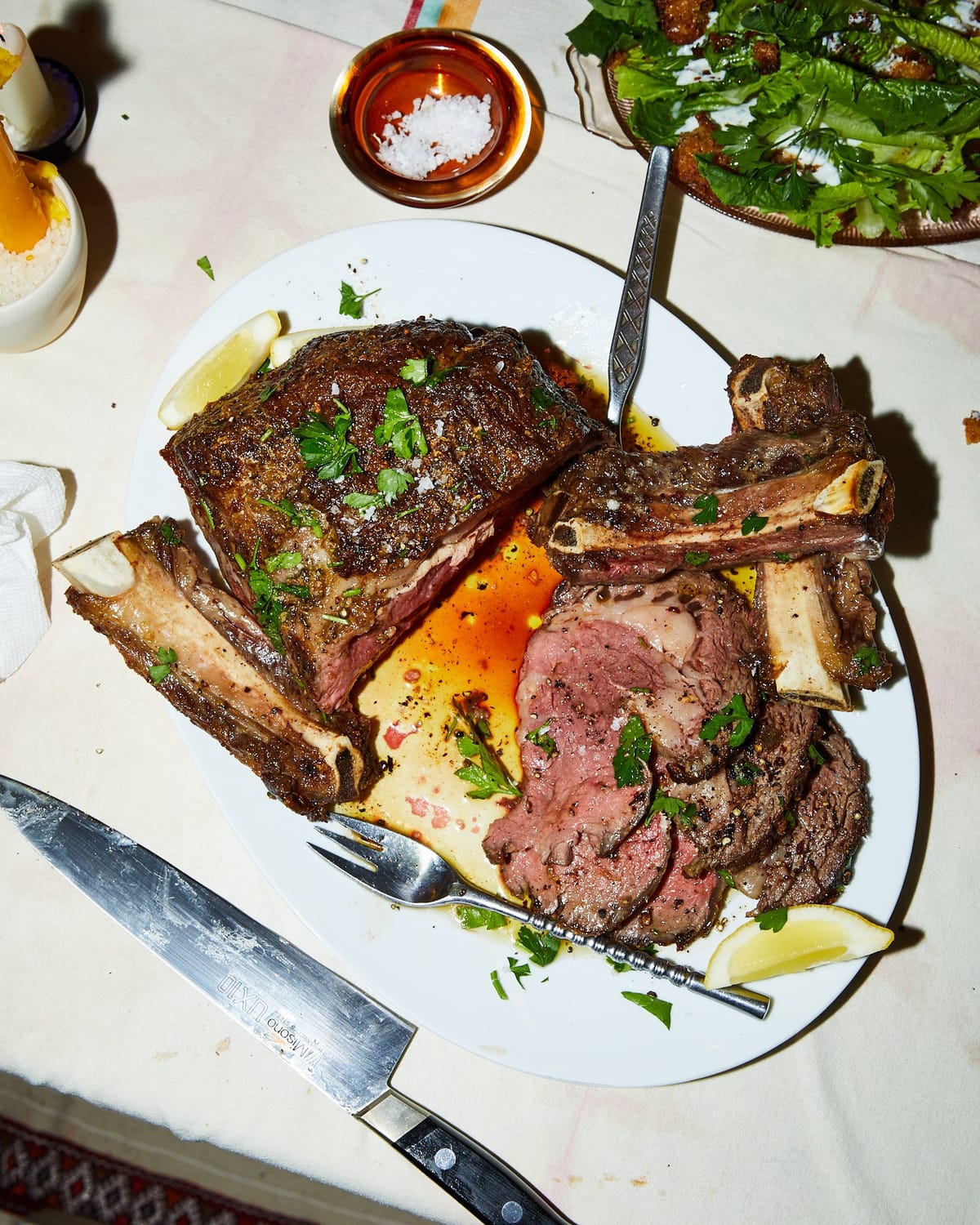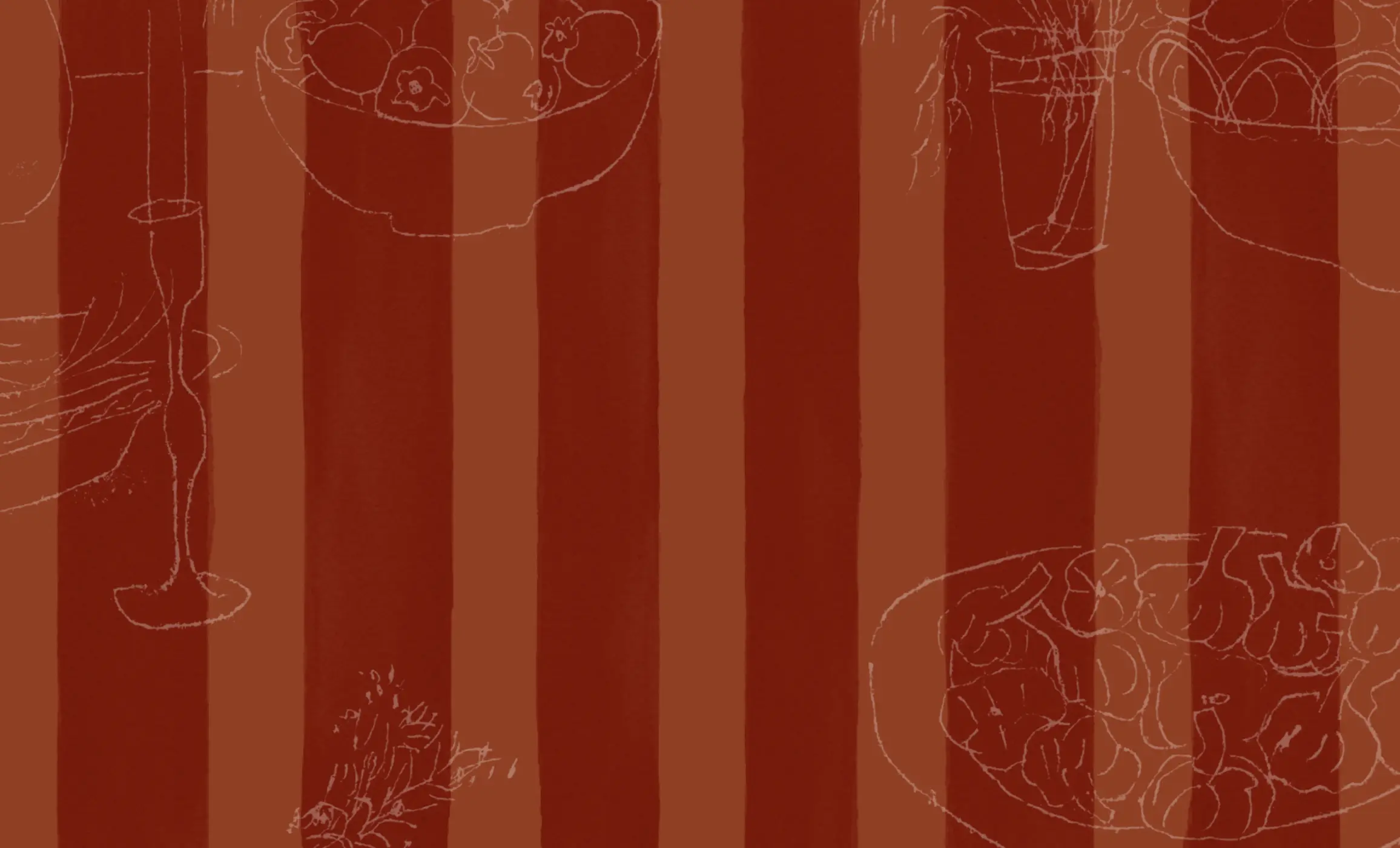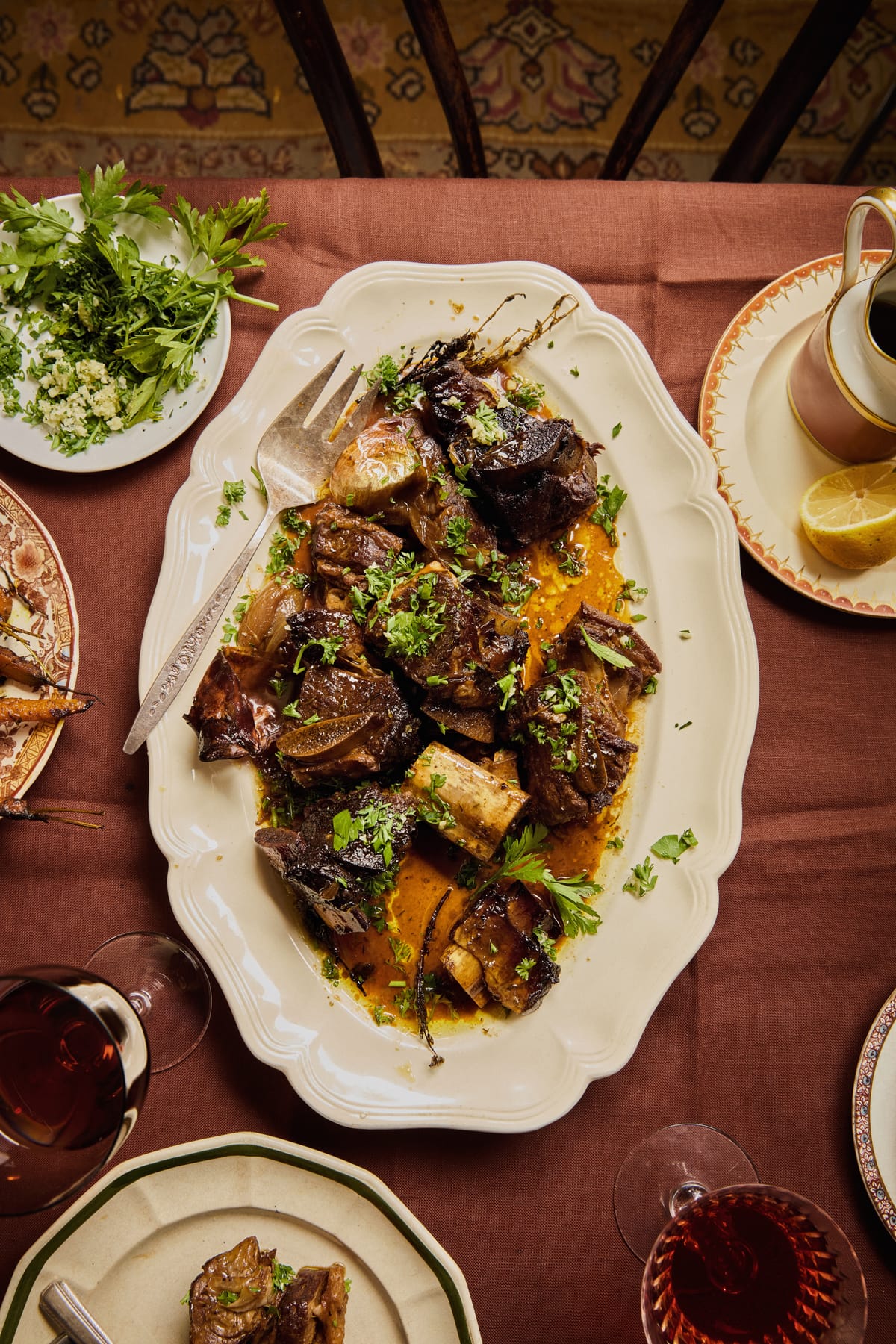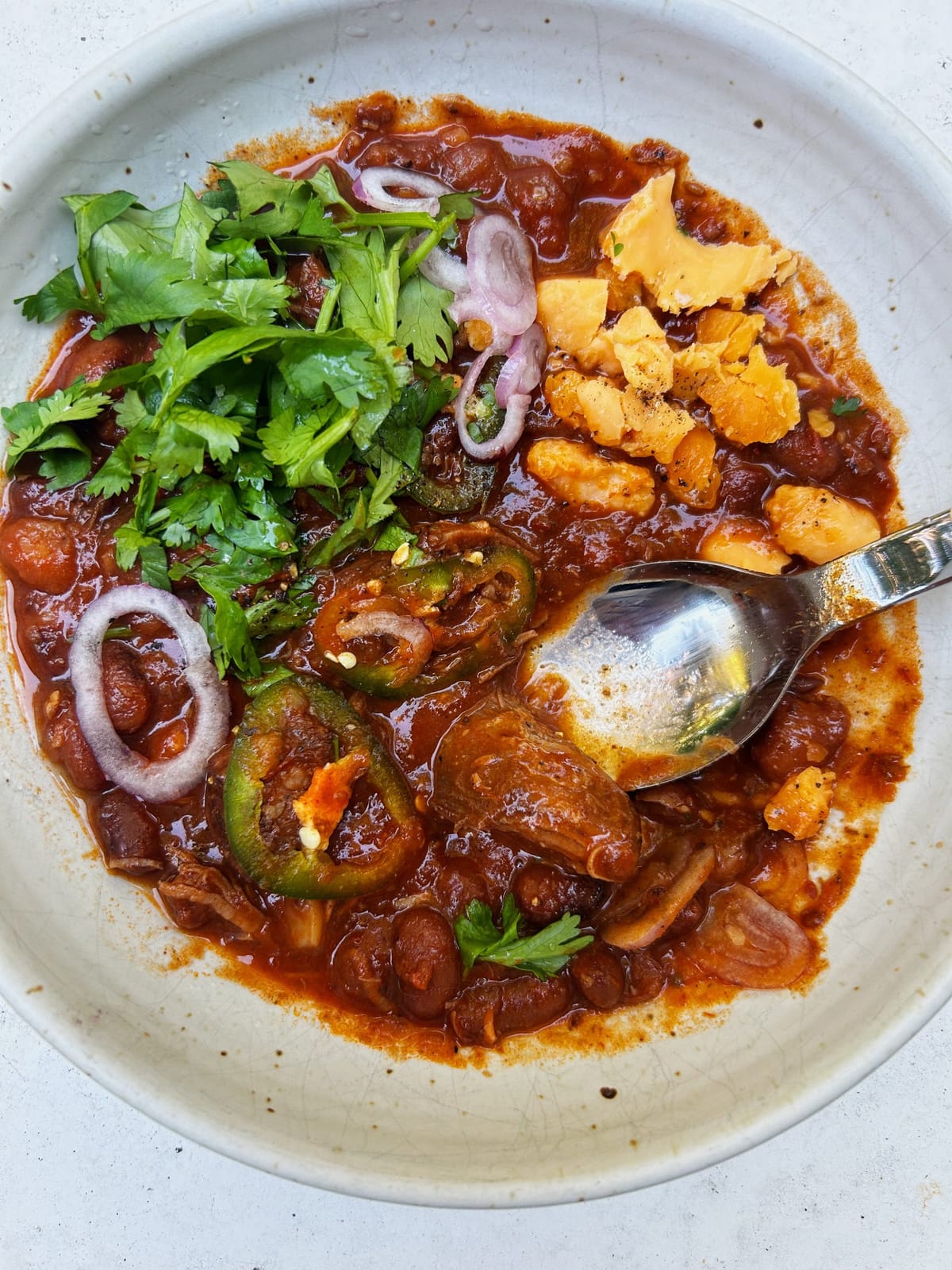Low and Slow Rib Roast with Anchovy and Rosemary
When it comes to cooking for special occasions or large groups of people, I am a huge fan of focusing all your emotional and financial efforts on one, glorious, foolproof thing. Say, a very large piece of more expensive than usual red meat.

YIELD — 8–12 servings
When it comes to cooking for special occasions or large groups of people, I am a huge fan of focusing all your emotional and financial efforts on one, glorious, foolproof thing. Say, a very large piece of more expensive than usual red meat. Season it aggressively with anchovies, rosemary, and garlic. Love it passionately and cook it perfectly at a low and gentle temperature until a delightful medium-rare. If you feel it needs it, you can finish it further by browning it in a skillet (or a very hot oven), and then relish in the fact that it doesn’t even need to rest that long (thank you, “Reverse Sear!”). It’s a perfect thing on its own, only made better by a side of boiled, buttered potatoes and some creamy greens.
Ingredients
- 6- to 7 ½-pound whole bone-in rib roast (about a 3-bone roast), not frenched*
- Kosher salt and freshly ground black pepper
- 6-8 sprigs fresh rosemary or 1 bunch thyme, divided
- 1-2 tins or jar of anchovy fillets (about 10-20 anchovies), plus more for serving if you like
- 6-8 garlic cloves, finely grated
- ¼ cup olive oil, plus more for serving
- 1 tablespoon canola oil (optional)
- Flaky sea salt
- 1 cup fresh parsley, tender leaves, and stems, finely chopped, plus more for serving
Preparation
- Season the meat with salt and pepper (you want 1 teaspoon of kosher salt per pound). Place on a rimmed baking sheet (preferably lined with a wire rack so that the meat does not sit directly in the liquid that escapes from salting, and let sit at least 2 hours at room temperature or up to 48 hours refrigerated.
- Meanwhile, finely chop 2-3 sprigs of rosemary and the anchovies and combine in a medium bowl with the garlic and olive oil. Season with salt and pepper.
- Preheat the oven to 250°F.
- Scatter the remaining 4 sprigs of rosemary on the bottom of a rimmed baking sheet. Smear the meat with the anchovy mixture and place on top of the rosemary. Place the whole thing in the oven and let it roast low and slow until a meat thermometer reaches 110°F (for medium-rare) when inserted into the deepest part of the meat, 2 1/2 to 3 1/2 hours. Remove from the oven (the temperature will continue to rise as it sits—you’re looking for an eventual 125°F temperature). Let it hang out for up to 4 hours at room temperature.
- When you’re ready to eat, if you’d like for the roast to be more browned, heat 1 tablespoon canola oil in a large cast-iron skillet over medium-high heat. Once the oil is smoking, add the meat, fat side down. Cook, pressing lightly to encourage the whole underside to make contact with the skillet until it’s deeply browned, 5 to 8 minutes. Flip the roast so that it’s fat side up and remove from heat. (Alternatively, increase the temperature to 500°F, or however high your oven goes (or turn on your broiler), and cook the roast until the fat is browned, 10 to 15 minutes.
- Transfer the meat to a cutting board, leaving any juices behind in the pan.
- Make a quick pan sauce by transferring all the juices to a small bowl. Add the chopped parsley and season with salt.
- Slice the entire roast away from the bones then separate each individual bone (keep them for serving/nibbling). Slice the roast however you please; I like mine on the thinner side, about ¼ inch slices, but some prefer thinner (like roast beef) or thicker (like prime rib). Place the slices on a large serving platter. Sprinkle with flaky salt and parsley, and serve with the pan sauce alongside.
Tip
*To make this for a smaller piece of meat (say half the size), simply reduce the cooking time by half, checking it at 30-minute intervals to avoid overcooking.




Discussion